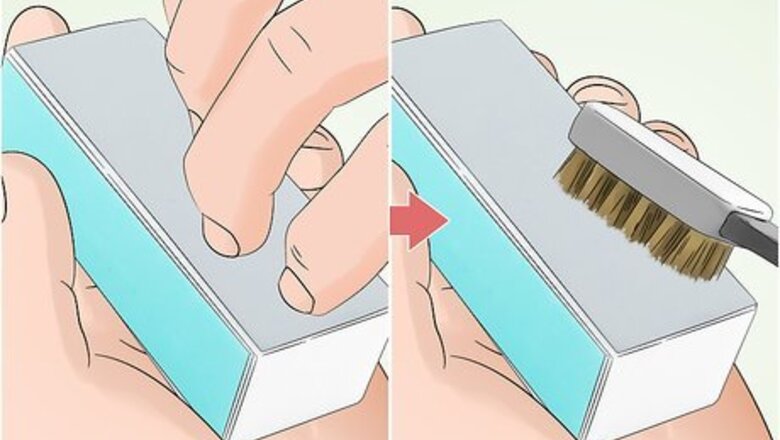
views
Cleaning a Nail Buffer
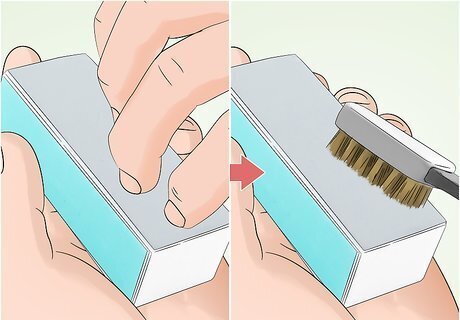
Clean your personal buffer after each use. Every time you buff your nails with this tool, you could be getting germs on it. It’s better to be safe than sorry! Cleaning your buffer should also make it last longer before you need to throw it out. Removing debris from the buffing surfaces will make the tool more effective for future uses.
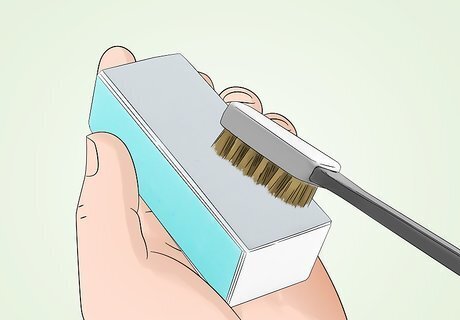
Scrub with a small nylon or wire brush to remove surface debris. Either type will work, so pick whichever brush is easiest for you to purchase. Start by scrubbing the buffer without soap or water to remove the coating of dust and debris. You should be able to find both types of brushes at your local pharmacy or a home improvement store. You can also use a manicure brush for this.
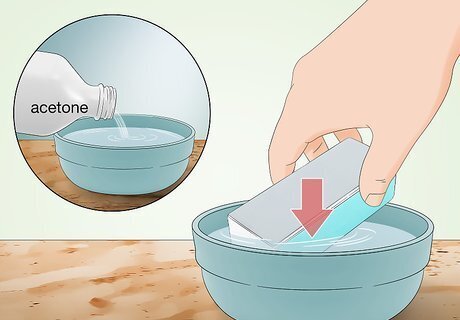
Soak the buffer in acetone for a few minutes. Fill a small container with acetone nail polish remover. Completely submerge the buffer in the liquid. This will remove any remaining debris from the buffer. Throw out the acetone when you’re finished. If you’re concerned about throwing away so much nail polish remover, choose a sealable container. Pour a small amount of acetone in the container and shake it with the liquid and buffer inside. This will allow the acetone to completely coat the buffer. If you use this method, you should still throw out the acetone when you're finished.
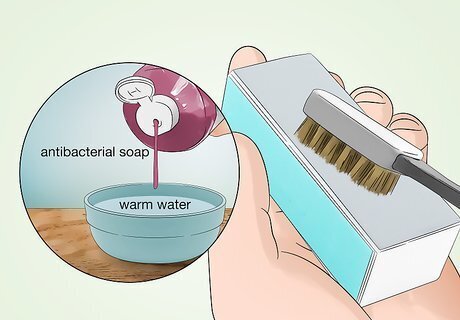
Scrub the buffer again with antibacterial soap and warm water. Use your bristle brush to get a lather. Once you’ve given the buffer a good scrub, rinse it off. Now you’re ready to disinfect! Personal-use pumice stones, nail files, and metal nail tools can also be cleaned using this method. Professional manicurists should heat-sterilize metal tools to clean them, and it’s best to throw away pumice stones and nail files after one use.
Disinfecting a Nail Buffer
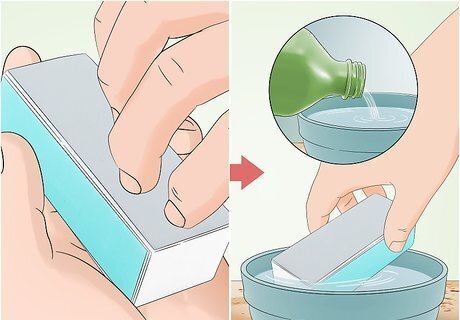
Disinfect your personal buffer after each use to be safe. Every cleaning should be followed up with disinfecting. It only takes about ten extra minutes, and it’s worth it! Using the same disinfecting process as professional manicurists will make your buffer extra clean and safe. This should minimize your risk of developing an infection under or near your nails.
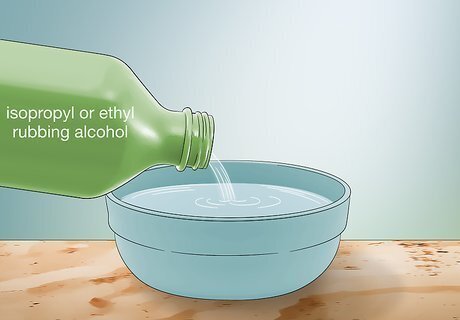
Fill a container with your chosen disinfectant solution. Purchase isopropyl or ethyl (rubbing) alcohol to disinfect your buffer. Both of these materials will be available online or at your local pharmacy. Each type of rubbing alcohol will disinfect your buffer equally well, so pick up whichever one is easier for you to find.
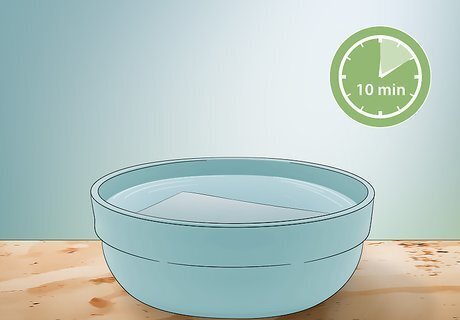
Soak the buffer in the disinfectant for ten minutes. Pour the rubbing alcohol into a small container. Place your buffer in the container, making sure that it’s completely submerged in the disinfectant. After about ten minutes, you can remove your buffer. This is also a great way to disinfect other manicure tools, including nail files, pumice stones, nail clippers, and cuticle pushers. They can be disinfected together. You can also spray your buffer with a disinfectant tool spray in between uses.
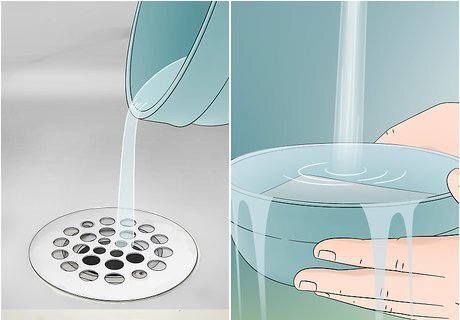
Throw away the used rubbing alcohol. Pour the dirty rubbing alcohol down your drain once you’re finished with it. Turn on the faucet and let the water run before you begin pouring out the alcohol. Keep it running for a minute after you’ve finished pouring. If you don't want to waste the rubbing alcohol, you can keep it in a sealed container and use it for up to a week.
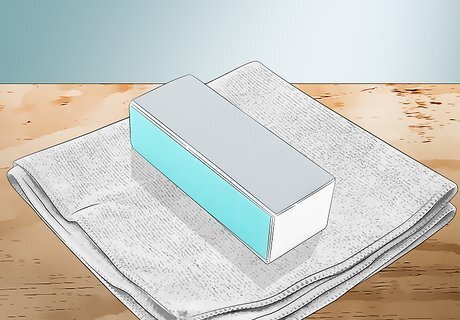
Allow the buffer to air dry. Place your buffer on a clean towel. Check it after a few hours and flip it over so the other side can dry as well. You may need to squeeze excess moisture out of a buffer that contains foam parts.
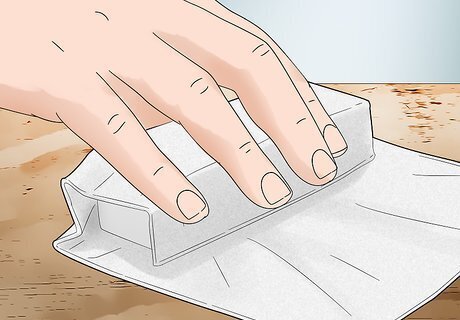
Store your buffer by wrapping it in a clean towel. Once your buffer is completely dry, choose a small, clean towel. Place your buffer on the towel and fold it up. You can then put the buffer wherever is most convenient for you. It’ll be ready and waiting when it’s time for your next manicure!
Disposing of Nail Buffers
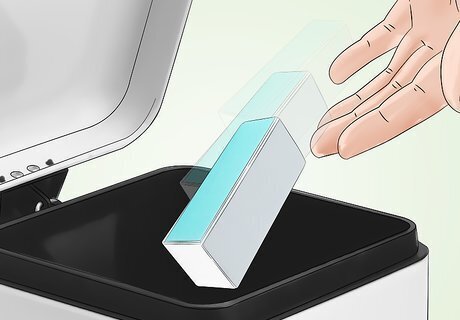
Dispose of nail buffers after each use if you’re a manicurist. Since most nail buffers are porous, it’s best to stay on the safe side with these tools. Even heavy-duty disinfectant solutions can’t completely sanitize these tools, so the same buffer shouldn’t be used on multiple people.
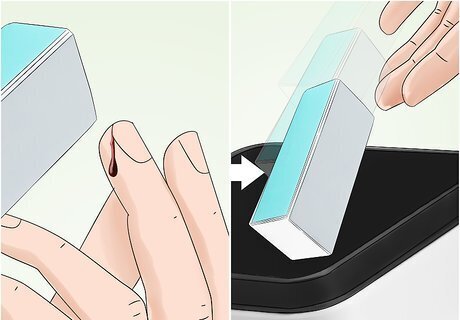
Throw away any buffer that has touched damaged skin. If your nail buffer comes into contact with blood or a part of your skin that’s infected, it’s not safe to use again. Even though it’s frustrating to throw away a buffer just because your hangnail bled a little, it’s much better to keep yourself healthy!

Don’t share your nail buffer with other people. You may love your friends and family, but you don’t love their germs! Even if you spend lots of time with these people, you each have your own germs, and they shouldn’t be shared. If someone else uses your nail buffer, it needs to be thrown away.
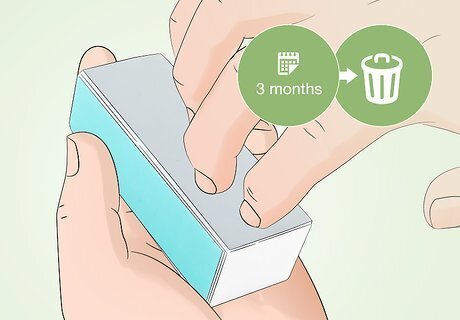
Get rid of your personal nail buffer after three months. Like nail files, buffers will wear out after multiple uses. Worn-out nail tools can actually damage your nails! If you use your nail buffer at least once a week, it probably won’t be very effective after three months. Getting a new one will also limit your exposure to those pesky germs! Your nail file may wear out sooner than this if you use it daily.




















Comments
0 comment